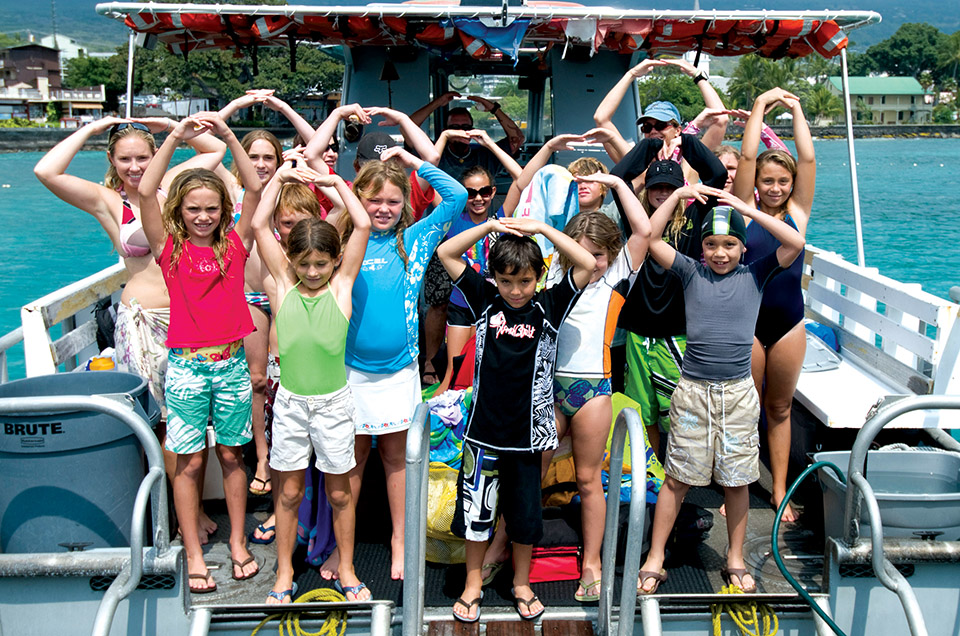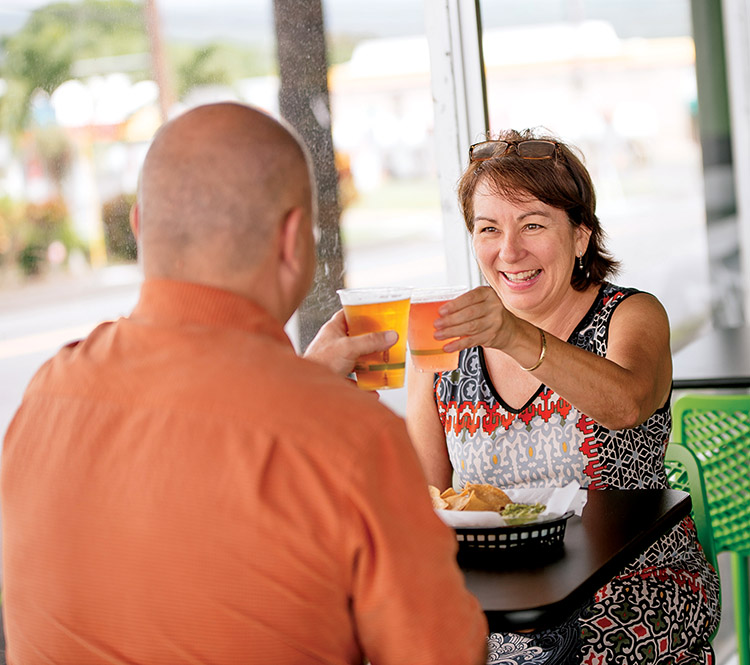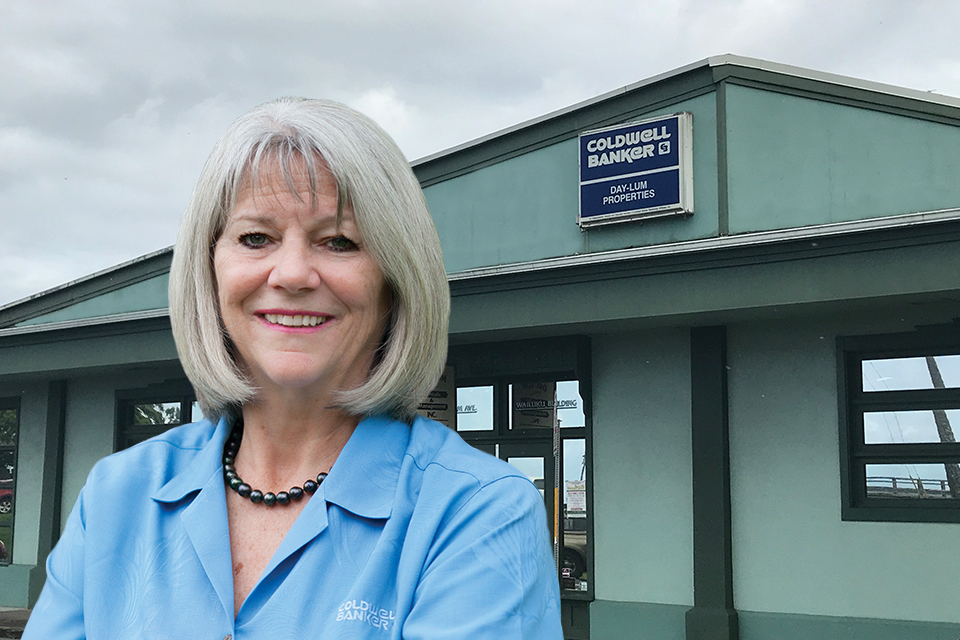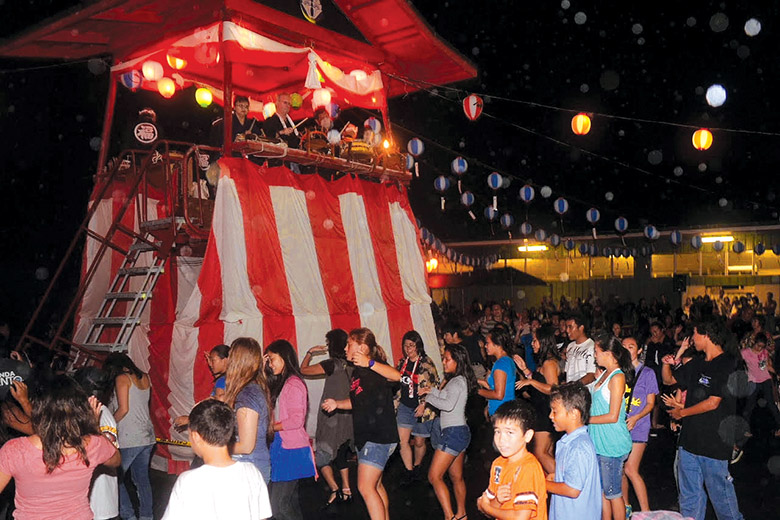
Then & Now: Obon Season–A Favorite Summer Tradition on Hawai‘i Island
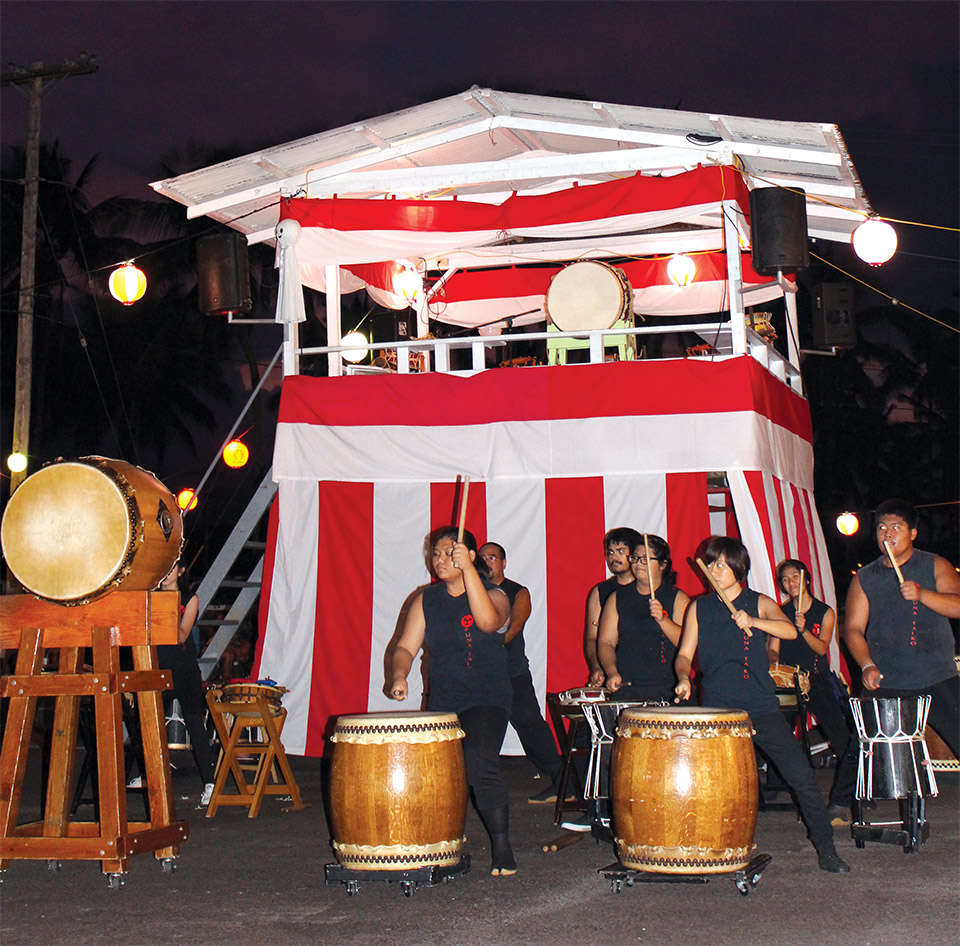
By Denise Laitinen
Summertime is obon season in Hawai‘i. Every year from June through August, the annual Japanese Buddhist tradition of obon festivals, or bon for short, takes place on Hawai‘i Island. These fun cultural events tend to draw large crowds and are renowned for serving delicious food.
When Japanese workers came to Hawai‘i in the 1800s to work on the sugar plantations, they brought their cultural traditions with them and built small temples (often referred to as missions or hongwanji in the Buddhist religion) in the communities in which they lived.
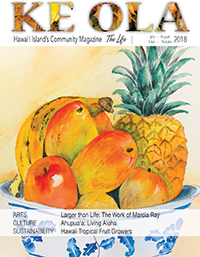
Obon festivals are a custom dating back more than 500 years celebrating life and paying tribute to one’s ancestors. According to Buddhist tradition, a monk saw that his mother was suffering after she had passed away. The monk asked Buddha why his mother was suffering and what he could do to stop it. Buddha told the monk that he had to make offerings to his ancestors to show that he was grateful for all his mother had done for him. Because the monk showed his appreciation, his mother was released from suffering and the monk was so happy that he rejoiced and danced. Hence the traditions of holding a church service to honor the relatives, as well as a community dance to show one’s ancestors that you are doing well.
The word “obon” also means “round tray” in Japanese explains Jane Heit, who is a member of Puna Hongwanji and belongs to the Hilo Meishoin Tsukikage Odorikai. “It’s a double meaning of serving someone using a round tray and being of service.”
Typically held on a Friday or Saturday evening, the bon dance festivals feature a church service, taiko drumming, dancing, and of course, lots of good food.
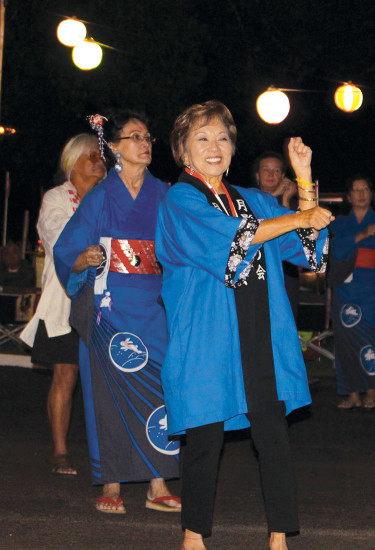
“The bon season is when we honor people who have passed before but also when families get together,” says Winifred Kimura of Kainaliu, who has been teaching bon dancing at the Daifukuji Soto Mission for more than 20 years.
“They come for the service and the dance and can join in whether they know how to dance or not,” explains Winifred. “It’s a time of joy. We always invite everyone to join in the circle. It’s a night of fun.”
Bon festivals all follow a similar design. Lighted paper lanterns are strung across the temple grounds with an elevated stage called a yagura decorated with white and red ribbons at the center of the festivities. Dancers wear happi coats and cotton yukata kimonos and dance (called the bon odori) in a circle around the yagura while musicians playing string and wind instruments perform atop the stage.
“The dances performed at a bon festival have a lot of repetitious motions,” explains Winifred. “Once you get into it and follow someone, it’s easy to learn. It’s a four-four time, maybe go forward four steps then back four steps. I try to pick out simple dances so people can just jump in.”
During the sugar plantation era, bon dances were often the big event of the summer and today they still draw folks from far and wide, in part due to the legendary amount of delightful food, which is sold as a fundraiser for the host temple or mission.

“To me growing up in Hilo and Kea‘au, you went because you had to go to church but you also went for the good food,” says Paul Sakamoto, director of Puna Taiko, which is affiliated with Puna Hongwanji. Taiko is a Japanese style of drumming that has its roots in bon dancing and is frequently performed at bon festivals. Paul adds, “You also went to dance and you got to wear your kimono—it was the one time a year you wore it. It was something you looked forward to.”
Jane also grew up going to bon dances. “In the old days the dances were often led by the wife of the minister and the women’s auxiliary group,” explains Jane. She started bon dancing at an early age because her mom and other family members danced. “It used to be the old ladies that ran things,” says Jane. “When they passed, there weren’t members of younger generations to take over as the lead dancer.”
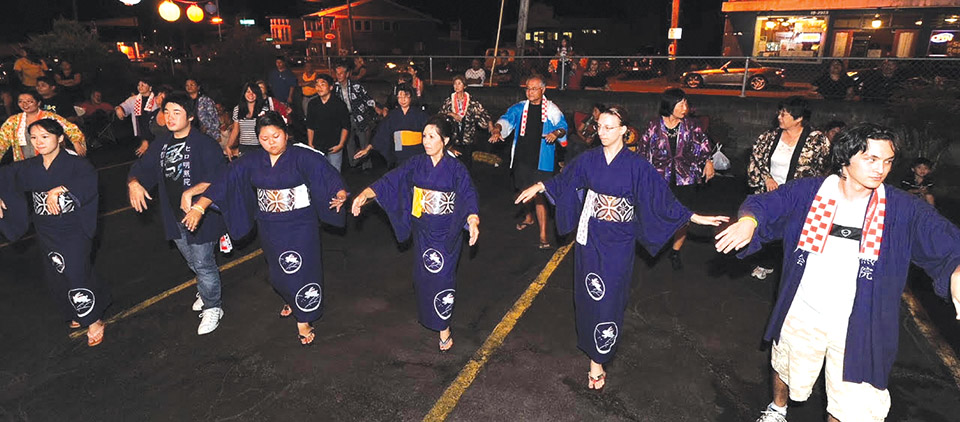
Jane and members of her bon dance group were asked to teach others because people knew “we were practicing the dances, and other people knew we knew how to do the dances.”
Learning from older members of her church was how Winifred first learned how to dance obon. Born and raised on Hawai‘i Island, Winifred moved to the mainland as an adult and moved back to West Hawai‘i in the 1970s. “The older generations were still young, so I used to follow them,” explains Winifred. By the 1990s, Winifred started teaching bon dancing, learning dances from a friend at church who also taught Japanese folk dancing.
Winifred says she used to only teach bon dances for a few weeks leading up to the bon festival, but now teaches the dances year round.
“A lot of the ladies wanted to keep up with the dances, so we meet once a month throughout the year to practice the dances. It’s good exercise too.”
For bon dance teachers like Jane and Winifred, it’s a balancing act when it comes to teaching the cultural tradition. “You need easy dances for the elderly members who may not be able to spin or move quickly, but also need faster dances for the younger people,” says Winifred.
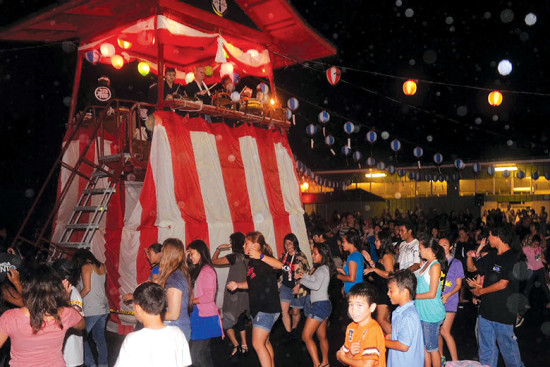
“I notice other places have incorporated modern songs and do line dances, even adding hip hop to their songs,” Winifred adds. “They choreograph some fast dances for the young ones. For me, I prefer the traditional Japanese folk dances. The main thing is to have fun; there are no critics.”
There are more than 20 different dances that can be performed at any given bon dance. Over the decades, dances have evolved with some dance choreography being unique to Hawai‘i Island.
“There’s a single song that’s super popular at Big Island bon dances,” says Paul. Called “Fukushima Ondo,” Paul says one of the reasons the song is popular is because many Japanese immigrants from the Fukushima region in Japan settled on Hawai‘i Island.
According to Jane, “Fukushima Ondo” is so popular it is one of the main songs performed by the Hilo Bon Dance Club, a taiko group that performs at many bon dances around the island, particularly in east Hawai‘i.
The way music is played at bon dances varies across the island. For instance, in Hilo it’s recorded music first and then live a Taiko dance, while in Hāmākua and Kona drummers’ rhythmic accompaniment adds an extra dimension to the recorded music. The music can also differ from one festival to another, from Eisa (Okinawan bon dance) and prefecture specific songs, that extends the range beyond its Buddhist core.
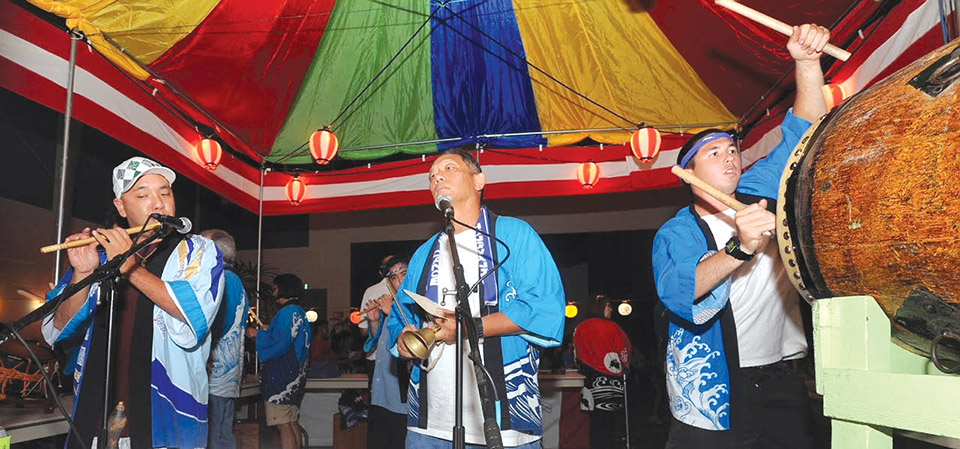
Paul explains that Puna Taiko performs at Puna Hongwanji, a Buddhist mission, where they do taiko performances, but do not necessarily participate with the bon music. Alternatively, at Hilo Daijingu in Hilo, the drummers do play along with the actual bon music, which is unusual because the temple is a Shinto shrine, and Shintoism is a separate religion from Buddhism.
Regardless of your religious affiliation, Paul says bon festivals are a great way to learn about local cultural traditions and have fun.
“It’s great to see the tradition still thriving and transcending local roots,” says Paul. “I see it in my daughter, she looks forward to going every weekend with her friends. To me, it’s become more of a local thing, more than just a Japanese event. It’s truly a community festival and I think that’s what makes it so awesome.” ❖
2018 Hawai‘i Island Summer Bon Dance Schedule
JulySaturday, July 7, 7pm Friday, July 6 and Saturday, July 7, 7:30pm Friday, July 13 and Saturday, July 14, 7pm Saturday, July 14, 7pm Saturday, July 14, 6:30pm Saturday, July 14, 7:30pm Saturday, July 21, 8pm Saturday, July 21, 7pm Saturday, July 21, 7pm Saturday, July 28, 7:30pm Saturday, July 28, 7:00pm |
Saturday, July 28, 6pm Pāpa‘aloa Hongwanji 35-2026 Old Māmalahoa Highway, Papa‘aloa 808.962.6340 AugustSaturday, August 4, 7pm Saturday, August 4, 8pm Saturday, August 4, 7:15pm Saturday, August 4, 7pm Saturday, August 11, 8pm Saturday, August 18, 7pm Saturday, August 18, 7pm Saturday, August 25, 7pm Saturday, August 25, 8pm SeptemberSaturday, September 1, 5pm |
